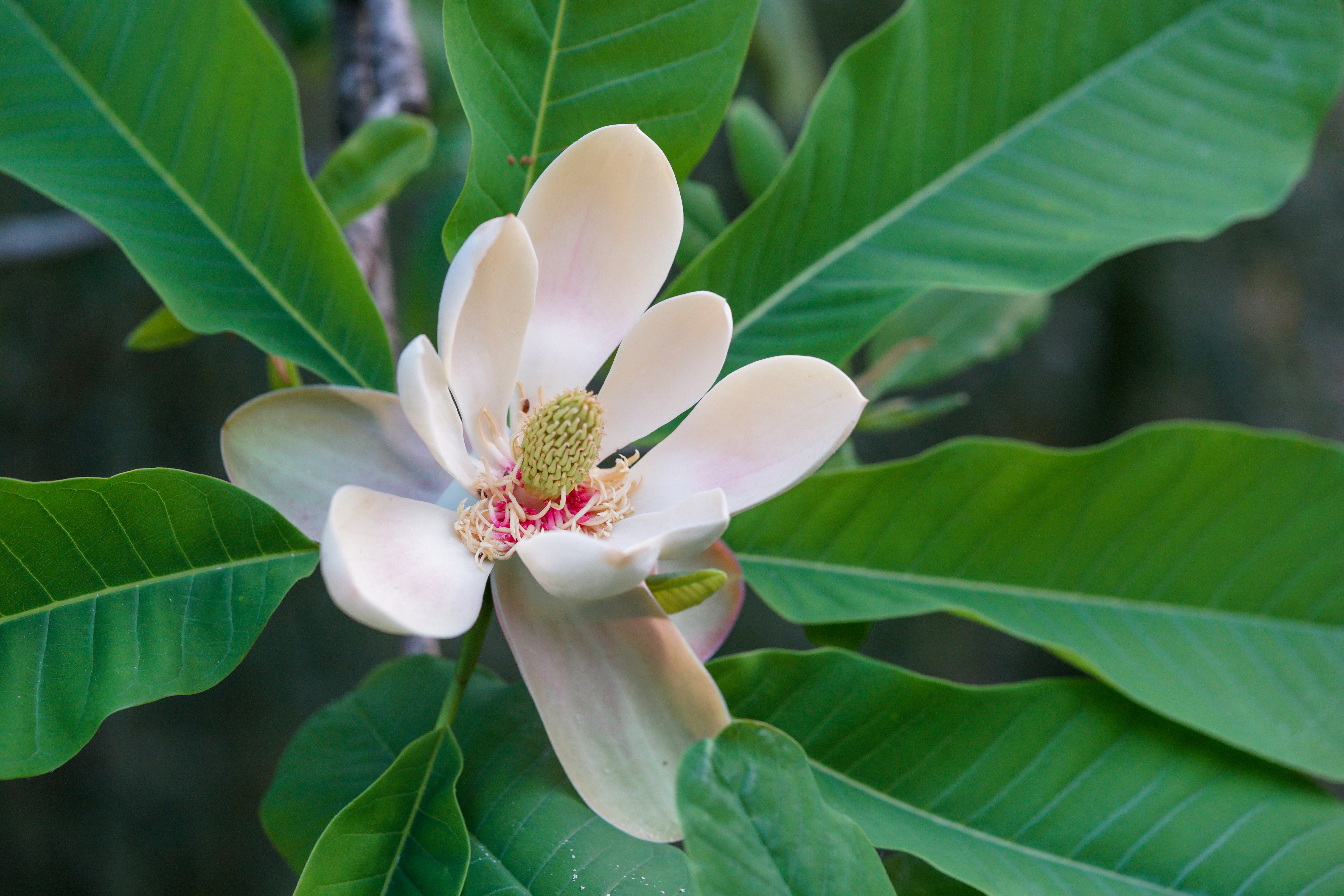Houpu magnolia
(Magnolia officinalis)

Description
Magnolia officinalis, commonly known as Houpu Magnolia or Magnolia bark, is a traditional Chinese medicinal plant that has been used for thousands of years in Asia. This plant belongs to the Magnoliaceae family and is native to China, Korea, and Japan. It is a small to medium-sized deciduous tree that can grow up to 20 meters tall in the wild. The tree is often grown for ornamental purposes in gardens and parks due to its fragrant flowers and attractive foliage. Description Magnolia officinalis is a small to medium-sized deciduous tree that can grow up to 20 meters tall in the wild. The leaves of the plant are oval-shaped and measure about 10 to 20 cm long and 5 to 10 cm wide. The leaves are dark green on the upper surface and pale green on the underside. The flowers of the plant are fragrant and appear in late spring or early summer. The flowers are cup-shaped and measure about 10 to 15 cm in diameter. The flowers are usually white, cream, or pale pink in color. The fruit of the plant is a cone-shaped aggregate of follicles that contains red seeds. Habitat and Distribution Magnolia officinalis is native to China, Korea, and Japan, where it can be found in a variety of habitats. In China, the plant is primarily found in the central and eastern regions, including Anhui, Fujian, Guangdong, Guangxi, Guizhou, Hubei, Hunan, Jiangsu, Jiangxi, Shaanxi, Sichuan, Yunnan, and Zhejiang. In Korea, the plant is found primarily in the southern part of the country, while in Japan, it is found on the southern islands of Kyushu and Shikoku. Magnolia officinalis typically grows in forests, woodlands, and along stream banks. The plant prefers moist, well-drained soils and can tolerate a range of pH levels. In the wild, the plant is often found growing in association with other deciduous trees, such as oaks, maples, and birches. In addition to its native range, Magnolia officinalis has been introduced to other parts of the world, including Europe and North America, where it is grown as an ornamental tree in gardens and parks. However, it is not considered to be invasive in these regions. Medicinal Uses Magnolia officinalis has been used in traditional Chinese medicine for centuries to treat a wide range of health conditions. The bark of the plant contains several active compounds that have been shown to have medicinal properties. The main active compounds in the bark are magnolol and honokiol, which have been shown to have anti-inflammatory, antioxidant, and neuroprotective effects. Magnolia officinalis has been used to treat a variety of conditions, including anxiety, depression, stress, and insomnia. The plant is believed to have a calming effect on the nervous system, which can help reduce anxiety and stress. The plant has also been used to treat digestive disorders such as bloating, diarrhea, and abdominal pain. It is believed that the plant helps improve digestion and reduces inflammation in the digestive tract. In addition, Magnolia officinalis has been used to treat respiratory infections such as colds and flu. The plant is believed to have antiviral and antibacterial properties that help boost the immune system and fight off infections. The plant has also been used to treat skin conditions such as eczema and acne. It is believed that the plant has anti-inflammatory properties that help reduce inflammation in the skin and promote healing. Preparation and Dosage Magnolia officinalis is available in several different forms, including dried bark, powders, capsules, and extracts. The most common form of the plant used in traditional Chinese medicine is the dried bark. The bark can be boiled in water to make a tea or decoction. The tea can be consumed several times a day to help reduce anxiety, stress, and other health conditions. Magnolia officinalis extracts are also available in supplement form. The extracts are often standardized to contain a specific amount of magnolol and honokiol, which are the active compounds in the plant. The dosage of the extract will depend on the specific product and the health condition being treated. It is important to follow the recommended dosage on the product label or consult with a healthcare professional before taking any supplements. Conservation Status The conservation status of Magnolia officinalis is currently listed as "Least Concern" by the International Union for Conservation of Nature (IUCN). This means that the species is not considered to be at significant risk of extinction at the global level. However, the plant has faced some threats in certain regions due to habitat loss, deforestation, and over-harvesting for its medicinal properties. In some areas, the plant has been heavily exploited for its bark, which has led to a decline in wild populations. In addition, the plant is susceptible to damage from pollution, pests, and disease. Efforts have been made to conserve Magnolia officinalis through various measures, including the establishment of protected areas and the cultivation of the plant for commercial purposes. The plant is now widely cultivated in China and other parts of Asia for its medicinal properties, which has reduced the pressure on wild populations. However, continued monitoring and conservation efforts are necessary to ensure the long-term survival of this important species. Conclusion Magnolia officinalis is a traditional Chinese medicinal plant that has been used for centuries to treat a wide range of health conditions. The plant contains several active compounds, including magnolol and honokiol, which have been shown to have anti-inflammatory, antioxidant, and neuroprotective effects. The plant has been used to treat anxiety, depression, stress, digestive disorders, respiratory infections, and skin conditions. The plant is available in several different forms, including dried bark, powders, capsules, and extracts. It is important to follow the recommended dosage.
Taxonomic tree:







